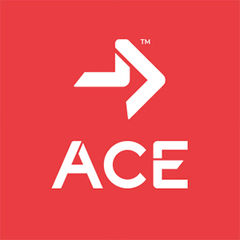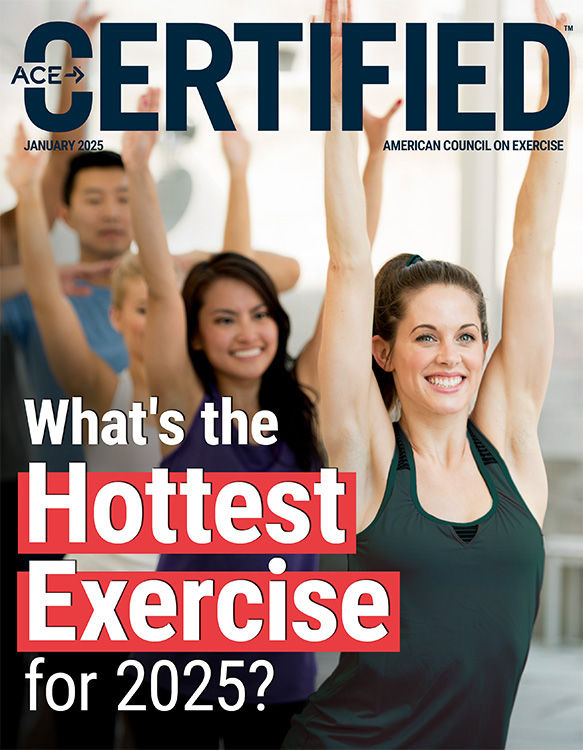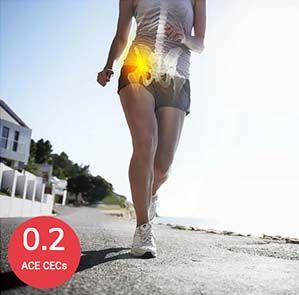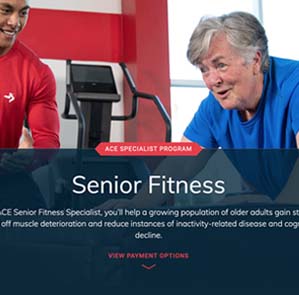
Aging Gracefully: Empower Clients With Balance and Strength Training

As people age, they often experience natural changes in their physical abilities—especially in strength, balance and gait. These changes impact everything from daily movement to overall independence. But here’s the good news: as a health and exercise professional, you have powerful tools to help your clients stay active and self-reliant well into their later years.
Case in point: A recent study by the Mayo Clinic, published in PLOS ONE, examined age-related changes in balance, gait and strength, and found that balance might just be the most crucial measure of neuromuscular aging. These findings open up exciting opportunities for you to prioritize balance in your programming and incorporate exercises that support clients’ longevity, stability and independence.
The Science of Balance, Strength and Gait in Aging
The Mayo Clinic study involved 40 healthy adults aged 50 and older, each of whom underwent tests in three key areas: balance, strength (grip and knee), and gait. While each area plays an important role in mobility, the study found that participants experienced the steepest decline in balance with age. This finding may come as a surprise, as many of us might think strength or even gait would be more closely linked to aging.
In the balance tests, participants stood on force plates in a series of increasingly challenging positions—from a two-footed stance with eyes open to single-leg stances with eyes closed. Results showed that the ability to maintain a stable center of pressure while standing on one leg, particularly with the nondominant leg, diminished notably with age.
Dr. Kenton Kaufman, senior author of the study, highlights the importance of balance as a measure of health, noting, “Balance is an important measure because, in addition to muscle strength, it requires input from vision, the vestibular system and the somatosensory system.” Kaufman also states that clients with poor balance face a greater risk of falls, a common and potentially severe health risk among older adults.
While strength metrics, specifically grip and knee strength, also showed age-related declines, these changes were not as significant as the decline in balance. Additionally, gait metrics—such as stride length and cadence—remained relatively steady across age groups, provided that participants walked at a natural, self-paced speed. The study’s findings underscore that while strength and mobility are crucial for aging clients, balance may be the real key to preserving independence.
Why Balance Matters
The notion that balance is foundational to healthy aging should encourage you to consider how you design exercise programs for your clients. Balance training not only improves stability, but also supports muscle engagement and coordination across the body. Better balance reduces the risk of falls and injuries, both common concerns among older adults.
Dr. Kaufman’s advice is simple yet profound: “If you don’t use it, you lose it. If you use it, you maintain it. It doesn’t require special equipment, and you can do it every day.” Health and exercise professionals can take this message to heart by helping clients work on their balance outside of structured sessions. Balance exercises can be incorporated seamlessly into daily routines, such as balancing on one leg while brushing teeth, washing dishes or waiting in line, which can encourage clients to practice and maintain their stability throughout the day.
How Health and Exercise Professionals Can Apply These Findings
As a health and exercise professional, applying these insights means crafting a balance-centered approach for aging clients, while also addressing strength and mobility. Here’s how you can use these findings to create meaningful change:
Build balance into every session. Start each session with exercises that challenge clients to stabilize and balance. Simple moves like standing on one leg or shifting weight side-to-side can be beneficial. Progress from basic, stable surfaces to more challenging setups, like a foam pad or BOSU balance trainer, to increase difficulty. Working on balance early in the session primes clients for other exercises, improving their ability to engage stabilizing muscles throughout their workout.
Provide clients with practical, everyday balance exercises. Encourage clients to weave balance practice into daily life. Aiming to hold a single-legged stance for 30 seconds can be a practical, achievable goal. Try creating a daily “balance challenge” for clients—an exercise that’s easy enough to do at home but effective enough to build coordination and strength over time. Encourage clients to practice standing on one leg while they are doing other tasks such as waiting for water to boil, for example. Small actions like these contribute meaningfully to stability, often without the need for additional equipment or time.
Combine strength and balance work. The study’s findings reinforce the importance of strengthening both the upper and lower body, especially knee extensors and the muscles involved in grip. Exercises like single-leg deadlifts, lunges and farmer carries (where clients walk holding weights) build muscle while challenging balance. As clients grow stronger, their ability to hold steady improves, making it easier to perform everyday movements safely and efficiently.
Empower clients to overcome a fear of falling. Many older clients have a natural fear of falling, and this can make them hesitant to take on balance exercises. Take time to build their confidence by starting with supported balance drills. Using a wall or stable surface for support can allow clients to ease into balancing without feeling anxious. As their stability and self-confidence grows, gradually reduce their reliance on support.
Highlight progress and small wins. Success in balance, like any fitness goal, is a process. Showing clients measurable progress in simple terms—such as increased single-legged stance duration or improved walking speed—gives them a tangible sense of accomplishment. Recognizing progress is also a key motivator, as it helps clients see how balance training positively affects their day-to-day life, whether it’s increased ease getting out of bed or a greater sense of steadiness while navigating stairs.
Addressing the Psychological Side of Balance Training
For older clients, the desire to maintain independence and prevent injuries often ties deeply into self-esteem and mental well-being. Many aging clients worry about feeling frail or overly dependent on others, which can create a sense of urgency around their physical fitness goals. By focusing on balance, you’re addressing both physical and psychological needs.
Encourage clients by reminding them that balance training is about maintaining autonomy and health, not just avoiding falls. As clients improve, you’ll likely see that confidence spill over into other aspects of their training—and their lives. Remind them that balance work might not feel as dynamic as other exercises, but it can be a hidden powerhouse in sustaining mobility and confidence as they age.
Building Strength and Endurance for Daily Function
While this study highlights the significance of balance in aging well, don’t overlook the importance of muscle strength, particularly in the grip and knee extensors, which directly support functional independence. Simple yet powerful strength exercises like lunges, squats and resistance-band movements improve lower-body power and flexibility. Grip strength, which showed a relatively higher decline rate in the study, can be addressed with exercises like carrying weights or squeezing stress balls.
Knee and grip strength aren’t just about mobility; they support a range of everyday actions like lifting groceries, opening jars and rising to standing from a seated position. Keeping these muscles strong is essential to preserving the independence that so many older clients hope to maintain throughout their lifespan.
The Bigger Picture: An Empowered Approach to Aging
The Mayo Clinic study serves as a reminder that age is just a number—and that proactive steps can make a difference in how clients experience aging. Health and exercise professionals are uniquely positioned to empower clients to approach their later years with resilience and optimism. Incorporating balance and strength exercises into a regular routine not only reduces the risk of falls and injuries but also fosters a mindset of independence. By designing programs that blend balance, strength and personalized encouragement, you’re doing more than helping clients move—you’re supporting their ability to enjoy life to the fullest.
Beginning Balance Exercises
Clients who have no previous balance-training experience should initially perform basic sitting and standing exercises to improve balance performance. Table 1 presents sample balance exercises and training progressions, moving from simple to more complex. As initial exercises become easier, an increase in difficulty can be accomplished in numerous ways:
- Arm progressions: Vary the use and position of the arms in numerous ways to make a given balance exercise more difficult. Hands may at first need to be grasping or touching another object, such as a wall or back of chair, to facilitate balance. Progressively, exercises can be performed with arms spread out and raised to shoulder height to assist with stability. Ultimately, clients can move arms in from sides to a folded position across the chest.
- Surface progressions: Alter the surface or apparatus on which clients perform balance exercises, progressively increasing the difficulty. For instance, foam pads and balance disks can be substituted for a hard, flat surface while performing multiple standing balance exercises. Similarly, stability balls can be exchanged for regular chairs when performing seated exercises.
- Visual progressions: Mitigate the visual sensory cues provided to the client during nearly all balance exercises. For example, lighting of the room can be gradually dimmed, sunglasses may be worn inside, or eyes may be shut completely.
- Tasking progressions: Require clients to initially master each balance exercise performed as a singular task. When this level of achievement is attained, additional tasks should be incorporated into the routine. Cognitive tasks or added physical tasks are a few of the readily available options.

Expand Your Knowledge
Hip Stabilization for Pain-free Movement
When it comes to issues associated with unstable hips, the good news is that simple exercises, when applied correctly, can bring relief from chronic pain and positively impact your clients’ quality of life. This 2-hour course covers function, assessment, and alignment of the hip complex, and explains how misalignment of the hips can impact the surrounding joints and tissues, as well as performance of the ankle, knee, and spinal column. You’ll be guided through a 5-phase workout program designed to relieve pain and poor alignment throughout the hip complex. With phases, that include hip flexion, hip extension, hip abduction, hip adduction and dynamic tension, the theory behind the workout program and each specific exercise is explained, ensuring that you’ll be well-equipped with a tool to use with future clients. From active agers to athletes, this course will prepare you to help restore movement and balance into the lives of clients through hip health.
ACE Senior Fitness Specialist Program
A growing population of older adults is seeking to gain strength and vitality while warding off inactivity-related disease and cognitive decline—and you can help them achieve their goals. The ACE Senior Fitness Specialist Program will teach you how to safely and effectively help senior clients maintain vibrancy through health and fitness. You'll discover a holistic approach to both body and brain health, combining rapport-building, behavior change, exercise programming, nutrition and cognitive health. Most older adults are impacted by some type of age-related chronic illness, injury or cognitive decline, so this specialized expertise will help increase your value and client pool. This Specialist Program will give you the confidence and knowledge to meet the unique needs of senior clients so you can support and coach them as they reach their health and fitness goals.

More Articles
- Certified™: January 2025
From Beginners to Pros: Why Everyone is Falling in Love With Pilates Again
Contributor
- Certified™: January 2025
The ACE Do it Better Series: The Two-handed Kettlebell Swing
Health and Fitness Expert
- Certified™: January 2025
Self-care Practices to Help You and Your Clients Manage Stress
Contributor
- Certified™: January 2025
Talkin’ About the Talk Test: Intensity Matters
Contributor
- Certified™: January 2025




 by
by 



